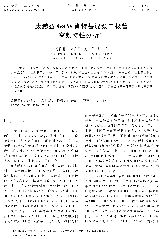摘要
In the THz frequency range, several new high effects will restrict diode high-frequency performance. With the thermionic emission theory and the tunnel theory, the high-frequency performance of epitaxial Schottky diodes is re-evaluated and the structure parameters are optimized with using the cut-off frequency as a figure of merit. The results show that when the operation frequency is higher than the plasma frequency, the diode is equivalent to a capacitance with losing the frequency mixing performance. With the increase of frequency, increasing the doping density of substrate can reduce the substrate plasma resonance effect. The plasma resonance frequency of epitaxial layer is an important factor but transit time effect must be considered. The higher operation frequency can be obtained through reducing the anode diameter and the epilayer thickness, and increasing the epilayer doping density. The results have an important reference value in developing the room temperature THz mixing diodes.
- 出版日期2010-8
- 单位北京航空航天大学
